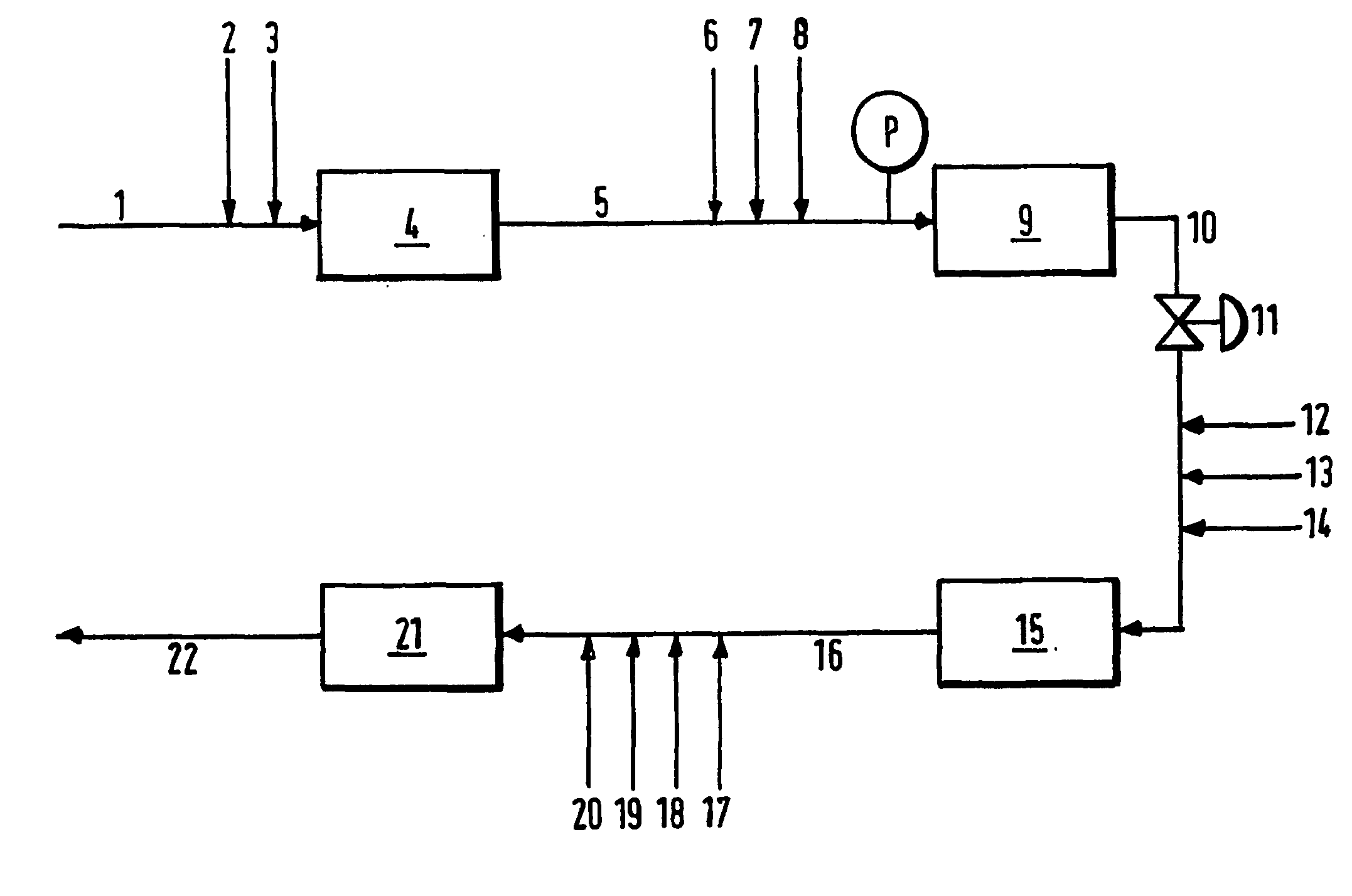Process for making silicone emulsions
a silicone emulsion and process technology, applied in the field of silicone emulsion making process, can solve the problems of yield stress, risk of uneven mixing or localised overheating,
- Summary
- Abstract
- Description
- Claims
- Application Information
AI Technical Summary
Benefits of technology
Problems solved by technology
Method used
Image
Examples
examples 3 and 4
[0048]Emulsions were produced by the process of EP874017 in which a chain extension reaction is carried out during emulsification. In both Examples the polysiloxane fluid comprised a vinyl-terminated linear polysiloxane of viscosity 10 Pa.s and a SiH— terminated short chain linear polysiloxane of viscosity 10 mPa.s. Both Examples prepared a thick oil in water emulsion continuously in a high shear dynamic mixer (9), although this emulsion was less viscous than the thick phase of Example 1. In Example 3 the thick phase was diluted batchwise. In Example 4 the thick phase was diluted continuously. The amounts of materials added through different lines are shown in Table 2 below.
[0049]
TABLE 2Example 3Example 4ReferenceReferenceMaterialWeight %in FIG.Weight %in FIG.Vinyl polysiloxane651651SiH polysiloxane2.0422.042Hexadecyl7.867.86trimethyl ammoniumchloride (29%active aqueouscationicsurfactant)Demineralised108108waterDemineralised14dilution1412watertankPlatinum complex0.031dil tank0.03113...
examples 5 and 6
[0053]Following the general procedure of Example 1, a thick phase silicone oil in water emulsion was produced from a trimethylsilyl-terminated polydimethylsiloxane fluid of viscosity 1 Pa.s by feeding the ingredients shown in Table 3 below. A static mixer was inserted in line (5) after surfactant feed (6) and before surfactant feed (7) so that the surfactant added at (6) was pre-dispersed in the polysiloxane fluid.
[0054]
TABLE 3Example 5Example 6% byReference% byReferenceweightin FIG.weightin FIG.Polysiloxane86.0186.01fluidSodium N-6.566.57lauroylsarcosinate35% aqueousanionicsurfactantTridecanol7.577.56ethoxylate(7)85% aqueousnonionicsurfactant
[0055]The thick phase was diluted in a dilution tank as described in Example 1. Particle size analysis of the emulsions produced gave the following results:[0056]Example 5—Median particle size 212 nm, D(v0.9) 275 nm[0057]Example 6—Median particle size 247 nm, D(v0.9) 400 nm.
[0058]As can be seen from the above results, stable emulsions were prod...
examples 7 to 9
[0059]Silicone emulsions were produced using the general procedure and ingredients of Example 5, but in the relative proportions 87.7% polysiloxane fluid, 4.9% anionic surfactant and 7.4% aqueous nonionic surfactant. In Example 7 no mixer was used between surfactant feeds (6) and (7). In Example 8 there was medium mixing of the anionic surfactant and polysiloxane fluid (simple static mixer between feeds (6) and (7)). In Example 9 there was thorough mixing of the anionic surfactant and the polysiloxane fluid (dynamic mixer between feeds (6) and (7)). Stable emulsions were produced in all Examples. The mean particle sizes of the emulsions were:[0060]Example 7—254 nm[0061]Example 8—197 nm[0062]Example 9—188 nm
PUM
| Property | Measurement | Unit |
|---|---|---|
| particle size | aaaaa | aaaaa |
| pressure | aaaaa | aaaaa |
| viscosity | aaaaa | aaaaa |
Abstract
Description
Claims
Application Information
 Login to View More
Login to View More - R&D
- Intellectual Property
- Life Sciences
- Materials
- Tech Scout
- Unparalleled Data Quality
- Higher Quality Content
- 60% Fewer Hallucinations
Browse by: Latest US Patents, China's latest patents, Technical Efficacy Thesaurus, Application Domain, Technology Topic, Popular Technical Reports.
© 2025 PatSnap. All rights reserved.Legal|Privacy policy|Modern Slavery Act Transparency Statement|Sitemap|About US| Contact US: help@patsnap.com


